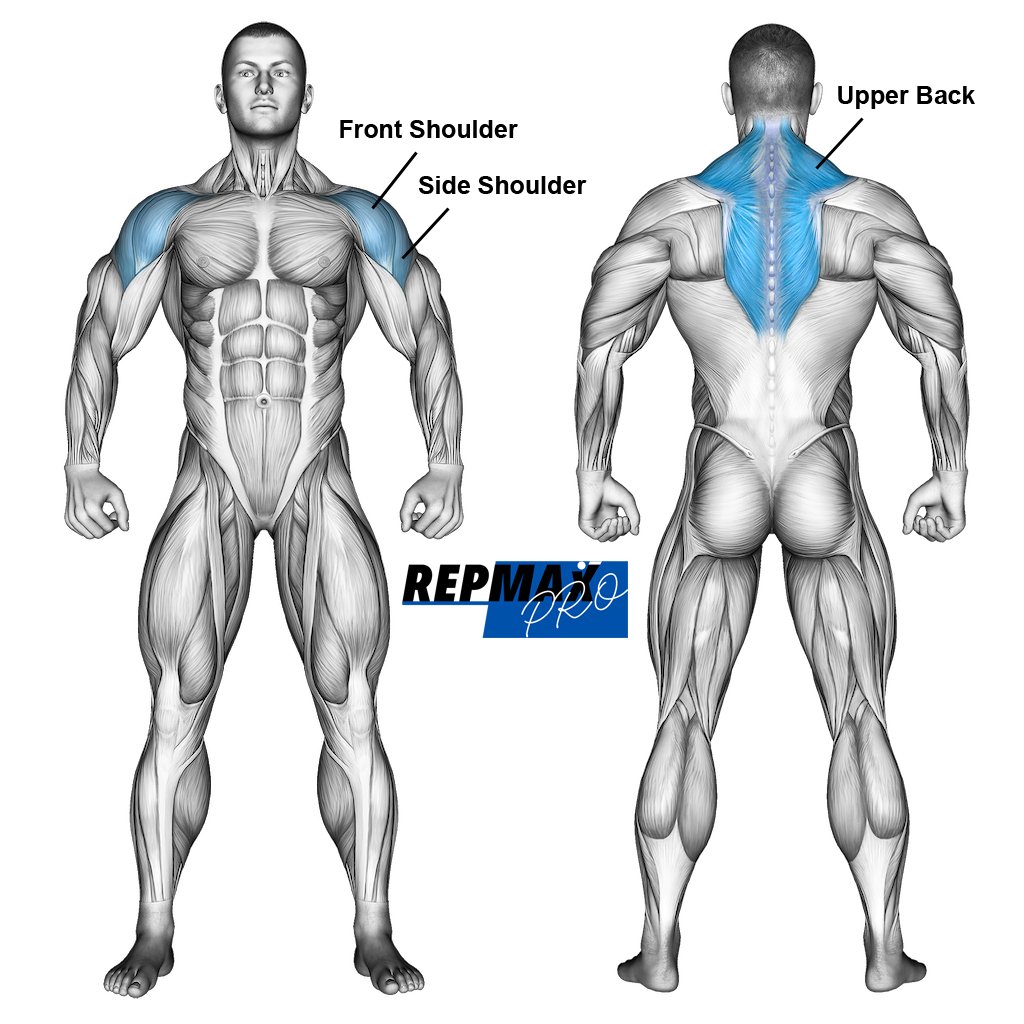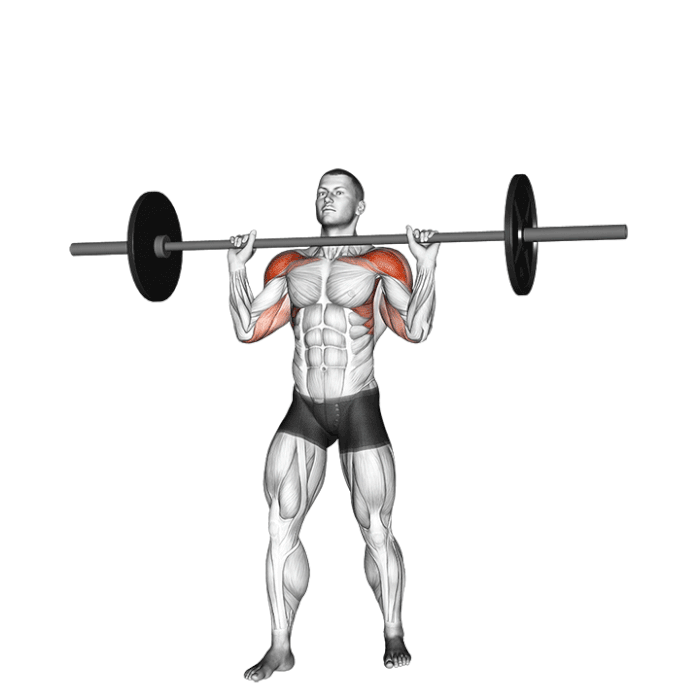Dumbbell Side Lying External Rotation (on a Bench)
The Dumbbell Side Lying External Rotation is an essential exercise for strengthening the rotator cuff muscles, which play a critical role in stabilizing the shoulder joint. This exercise specifically targets the infraspinatus and teres minor muscles, which are crucial for shoulder health and preventing injuries, especially in athletes or individuals involved in activities requiring extensive shoulder use. Performing this exercise on a bench allows for greater isolation of the targeted muscles, making it a highly effective addition to any upper body or rehabilitation routine.
Targeted Muscle Groups

Primary Muscles:
- Infraspinatus: This is one of the four rotator cuff muscles responsible for external rotation of the shoulder and stability of the shoulder joint.
- Teres Minor: Another rotator cuff muscle that works closely with the infraspinatus to rotate the arm outward and stabilize the shoulder.
Secondary Muscles:
- Deltoids (Posterior Head): The rear deltoid muscle assists in shoulder stabilization during the movement.
- Rhomboids and Trapezius: These upper back muscles help stabilize the scapula during the exercise.
Equipment Needed
- Dumbbell: A light dumbbell is typically used for this exercise, given the small size of the rotator cuff muscles. Start with 2-5 pounds, and increase the weight gradually as you build strength.
- Flat Bench: A standard flat bench is necessary to perform this exercise in a side-lying position.
How to Perform the Dumbbell Side Lying External Rotation: Step-by-Step Guide
1. Setup:
- Position yourself on a flat bench, lying on your side. The side you plan to work should be facing upward.
- Hold a light dumbbell in the hand of the upper arm. Rest your opposite arm comfortably in front of you or along your side.

Muscles used in the military press.
Illustration credit © Aliaksandr Makatserchyk
2. Starting Position:
- Bend your working arm at the elbow to a 90-degree angle, keeping your upper arm pinned against your torso. Your forearm should be positioned across your abdomen, with the dumbbell hovering just above your stomach.
3. Engage the Core and Shoulder Muscles:
- Before you begin the movement, engage your core muscles to stabilize your body. Also, ensure that your shoulder is retracted slightly to engage the scapular stabilizers.
4. Rotate the Arm:
- Inhale as you begin to lift the dumbbell by rotating your arm upward, away from your abdomen. Focus on rotating only your forearm while keeping your upper arm glued to your side. The movement should be slow and controlled to maximize muscle engagement.
5. Top Position:
- Continue rotating until your forearm is perpendicular to your body, forming a straight line with your upper arm. At the top of the movement, your arm should be parallel to the floor, and you should feel a contraction in the back of your shoulder.
6. Lower the Dumbbell:
- Exhale as you slowly lower the dumbbell back to the starting position, controlling the movement to avoid using momentum. Keep your elbow at a 90-degree angle and your upper arm close to your body throughout the descent.
7. Repetition:
- Complete the desired number of repetitions, then switch sides and repeat the exercise with the other arm.
Recommended Reps and Sets
- For Muscle Strength and Stability: 3 sets of 10-15 reps per arm.
- For Rehabilitation and Maintenance: 2-3 sets of 12-20 reps per arm with very light weight.
Allow 60-90 seconds of rest between sets to prevent muscle fatigue and maintain proper form.
Pro Tips for Success
- Start with Light Weight: Given the small size of the rotator cuff muscles, it’s essential to start with a very light dumbbell to avoid overloading the muscles and risking injury.
- Focus on Form: Ensure that the movement is slow and controlled, focusing on the external rotation of the shoulder without moving the upper arm away from your body.
- Breathe Correctly: Inhale as you rotate the dumbbell upward and exhale as you lower it. Proper breathing helps maintain stability and control throughout the exercise.
- Engage Your Scapula: Slightly retracting your shoulder blade before each repetition will help stabilize your shoulder joint and protect it from unnecessary strain.
Common Mistakes to Avoid
- Using Too Much Weight: One of the most common mistakes is using a dumbbell that’s too heavy, which can lead to improper form, reliance on momentum, and increased risk of injury. It’s crucial to prioritize technique over weight.
- Allowing the Elbow to Drift: Ensure that your elbow stays in line with your torso throughout the movement. Letting your elbow drift away from your body reduces the effectiveness of the exercise and shifts the focus away from the rotator cuff muscles.
- Moving Too Quickly: Performing the exercise too quickly can diminish the effectiveness of the movement and increase the likelihood of using momentum instead of muscle strength. Slow and controlled movements are key.
- Lack of Core Engagement: Failing to engage your core can lead to instability, making it harder to perform the exercise correctly. Keep your core tight to maintain a stable and balanced position on the bench.
The Dumbbell Side Lying External Rotation is an invaluable exercise for anyone looking to strengthen their shoulder stabilizers, improve shoulder mobility, and prevent injuries. By incorporating this exercise into your routine, you can build resilient rotator cuff muscles that support healthy shoulder function in both everyday activities and athletic pursuits. Remember to focus on proper form, use a light weight, and perform the movement with control to get the most out of this exercise.
